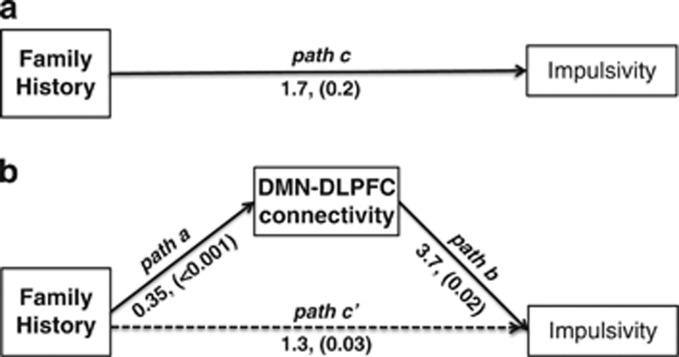Figure 2.
Path modeling of default mode network connectivity. (a) There was a non-significant effect of family history on impulsivity (path c, P=0.2). (b) However, an indirect effect was detected (indicated by dotted line) indicating that connectivity between the default mode network (DMN) and the right dorsolateral prefrontal cortex (DLPFC) mediated an effect of family history on impulsivity. In the first linear regression model, we found family history to be a significant predictor of decreased negative DMN-CEN connectivity at the right DLPFC (path a, β=0.35, t=4.07, P<0.001). We then used a second linear regression model and found that while controlling for family history, decreased negative DMN-CEN connectivity at the right DLPFC was a significant predictor of impulsivity as measured by CPT-II, commissions (path b, β=3.73, t=2.44, P=0.017). Last, we used the Sobel test to confirm the significance of the indirect effect of familial risk on impulsivity as mediated by DMN-CEN connectivity (path c', coefficient=1.3, P=0.03). DMN-CEN connectivity at the left DLPFC was also a mediator of family history and impulsivity (coefficient=0.9, P=0.05).

